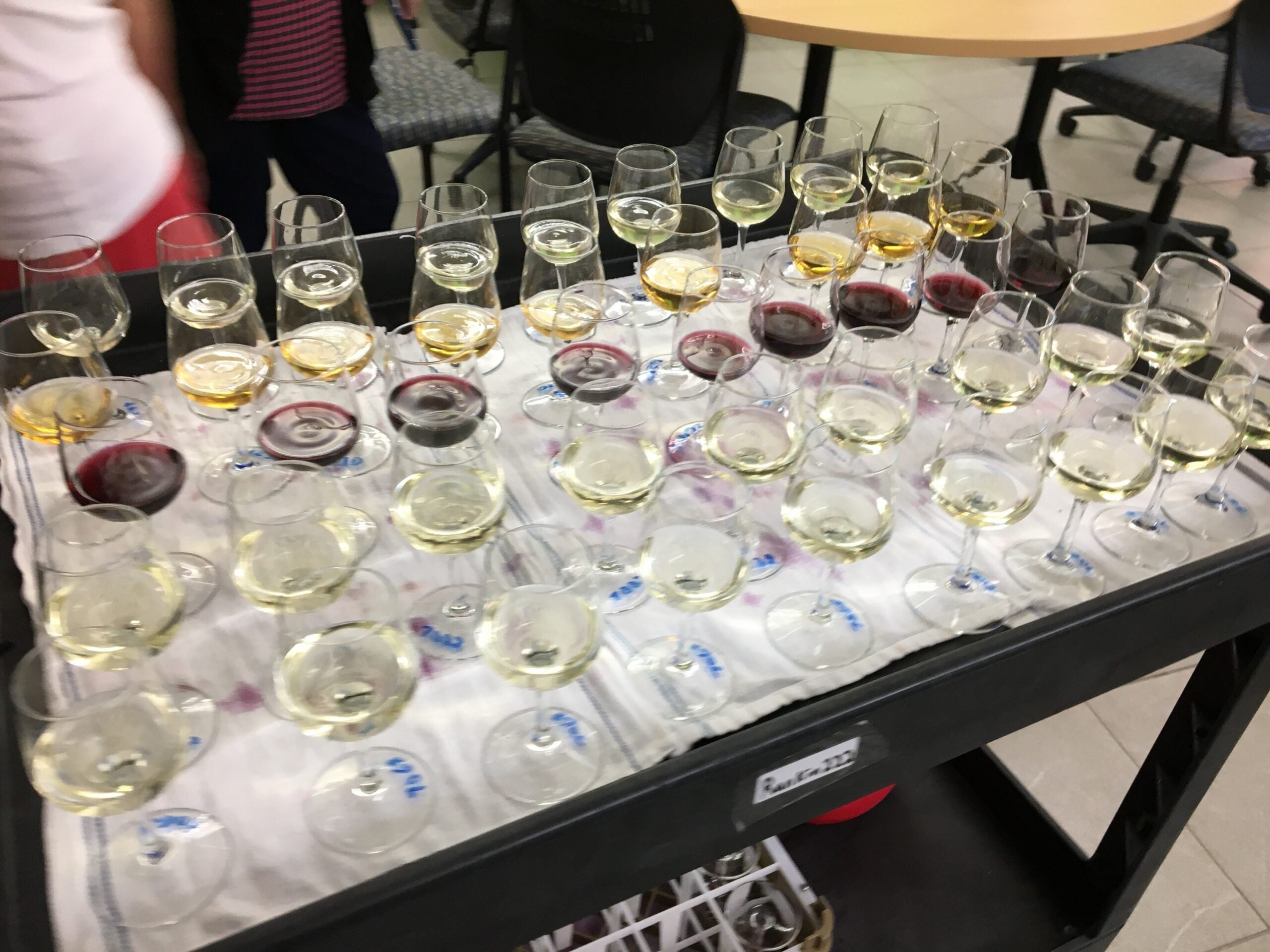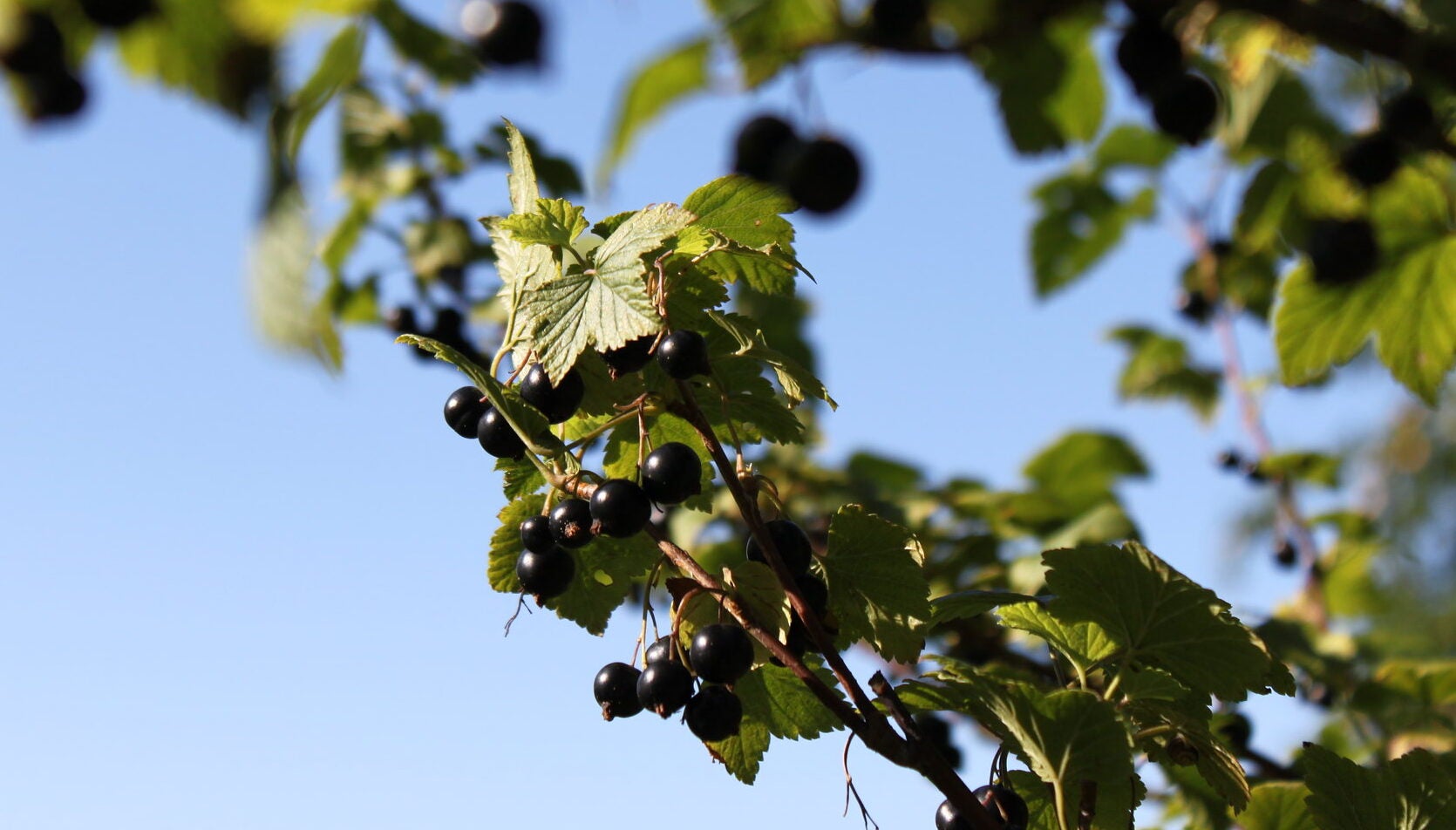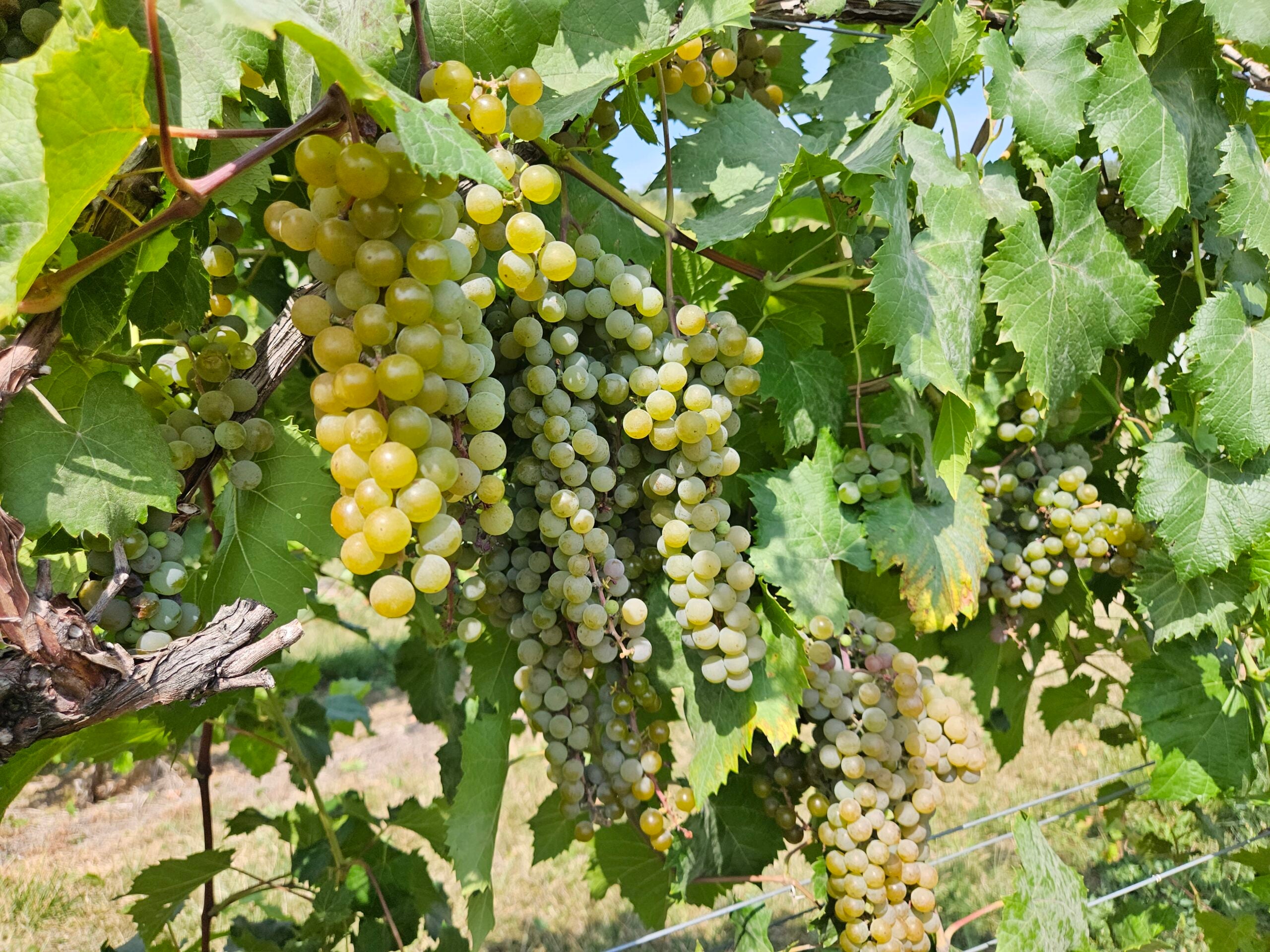Early on a Monday morning, volunteers uncorked dozens of wine bottles on the University of Wisconsin-Madison campus, preparing 93 local wines for judging in the first annual “Wine is Wisconsin” competition.
“We’re here to prove that these are amazing wines and they’re available, using local fruit,” said Nick Smith, the university’s enology outreach specialist. Enology is the study of wines and winemaking.
All the wines in the competition had to be commercially available and made with at least 75 percent Wisconsin-grown fruit, Smith said.
News with a little more humanity
WPR’s “Wisconsin Today” newsletter keeps you connected to the state you love without feeling overwhelmed. No paywall. No agenda. No corporate filter.
“We have everything from ports to sparkling,” Smith said. “Sparkling and rosés are probably two of our best options for some of our varieties, just because of the sugar and acid profile, but people make a wide range of wines from apples and fruits.”
There are 124 permitted wineries in Wisconsin, more than three times as many as there were 10 years ago, according to data from the state Department of Revenue.

Andrea Hillsey, owner of Square Wine Company in Madison, judges wines at the “Wine is Wisconsin” competition. Bridgit Bowden/WPR
So what’s behind this growth?
“Part of it is availability of grapes that can be grown in northern climates,” Smith said.
In the last couple of decades, several new kinds of grapes have been developed by universities and private breeders. They’re known as “cold-hardy,” meaning they can withstand extreme winters and still make great wine.
Wisconsin’s cold climate can cause problems for winemaking, said Ervin Paczkowski, president of the Wisconsin Vintners Association, an amateur group stewarding the competition.
“The whites and the reds all come up very high in acid, and they also don’t have the tannins that the cabernets and merlot and (zinfandels) and all that stuff has in California.”
But there are some newer grape varieties that capture what people like about wines like cabernet, and they’re also cold-hardy. Many of these grape varieties like Frontenac Gris, Frontenac Blanc, Marquette and La Crescent were developed at the University of Minnesota.
Matt Clark studies grape breeding and enology at the U of M. Breeding new grapes doesn’t happen overnight, he said. It can take about 20 years to create wine made from newly developed grapes.
During the development process, breeders are looking for grapes that can survive extremely cold winters and late spring frosts. They should thoroughly ripen in the short summer months, and of course, make good wine.
“After about five years, we have an opportunity to taste the grapes from each plant, then at which point we decide maybe we should make wine from that, or the alternative is that we get rid of that plant and it goes in the compost pile,” Clark said.
As they look ahead, breeders and growers are also thinking about the potential impacts of climate change on Midwestern grapes, especially as temperatures rise. But Clark said he still expects to need grapes that can stand up to cold winters.
“Even though we intend to experience higher temperatures on average, things that we do need to be concerned about are still major weather events, increased rain, increased drought events, he said. “In addition to still having regular cold weather occurring every winter.”
According to a 2014 University of Minnesota-Extension report, 83 percent of grapes grown in Wisconsin are cold-hardy. And according to that same report, cold-hardy grapes contributed more than $71 million dollars to Wisconsin’s economy in 2011.
At the Wine is Wisconsin competition, the best in show award went to Sparkler, a sparkling wine produced by Parallel 44 Vineyard and Winery in Kewaunee. Bois Brule Hopped Cider, from White Winter Winery in Iron River, was judged the best cider. The top fruit wine was Honey Crisp Harvest Apple Wine, from the Apple Barn Orchard and Winery in Elkhorn.
This story is part of a yearlong reporting project at WPR called State of Change: Water, Food, and the Future of Wisconsin. Find stories on Morning Edition, All Things Considered, The Ideas Network and online.
Wisconsin Public Radio, © Copyright 2026, Board of Regents of the University of Wisconsin System and Wisconsin Educational Communications Board.



